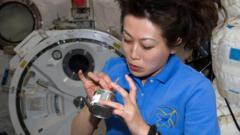In a striking confluence of nature and technology, Vaxa Technologies has established a groundbreaking indoor farm in Iceland, where it cultivates microalgae under the soothing glow of pink-purple lights. Situated adjacent to the country's largest geothermal power station, this innovative facility leverages renewable resources to produce a variety of microalgae, which has long been underappreciated as a food source despite its historical significance in regions like ancient Central America and Africa.
General Manager Kristinn Haflidason emphasizes this new approach to food production, revealing that Vaxa's unique setup enables the cultivation of Nannochloropsis microalgae and Arthospira, commonly known as spirulina, which thrive not only as human food but also as sustainable fish and shrimp feed. These aquatic organisms exhibit impressive nutritional profiles, rich in protein, omega-3 fatty acids, and essential vitamins.
Vaxa Technologies stands alone as the only algae production operation that is directly paired with a geothermal plant, providing clean electricity and cold water, while effectively utilizing CO2 emissions for algae growth. Asger Munch Smidt-Jensen from the Danish Technology Institute highlights the facility's carbon-negative footprint, showcasing its low impact on land and water resources. This combination of renewable energy and resource efficiency positions Iceland as a potential hub for advanced algae cultivation.
Inside the facility, a plethora of modular photo-bioreactors pulsate with energy, simulating sunlight with specialized LED lighting. The tightly controlled conditions—managed through machine learning—allow for daily harvesting of 7% of the algae crop, with an annual production goal of 150 metric tonnes. Vaxa's method not only addresses food insecurity but also capitalizes on the projected $25.4 billion market for microalgae by 2033.
While the nutritional potential of microalgae is promising, challenges remain. Taste and texture remain hurdles for broader consumer acceptance, and ongoing research aims to improve its digestibility and culinary versatility. Food scientist Malene Lihme Olsen suggests integrating microalgae into existing food products like pasta and bread to enhance nutrition without altering taste.
Despite skepticism surrounding microalgae's place in daily diets, the extensive benefits it offers should not be overlooked. From cosmetics to bioplastics and potentially even space exploration, the future of microalgae appears bright. Haflidason's vision is clear: instead of pushing for radical dietary changes, Vaxa Technologies aims to enrich current food products with nutritional innovations from the oceans of the future.






















